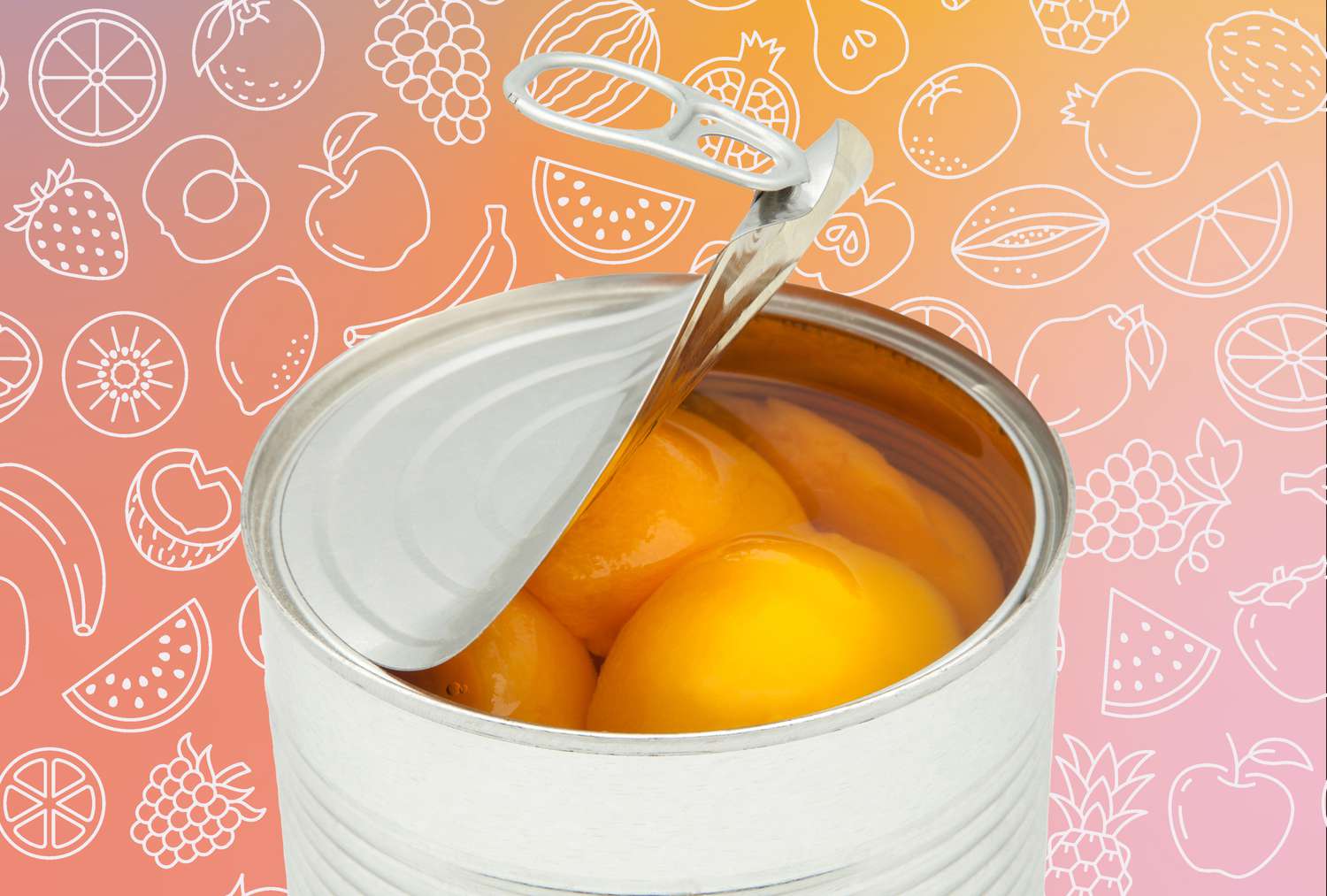
Can People with Diabetes Eat Canned Fruit? Here’s What Dietitians Say
Key Takeaways
- Canned fruit can be a nutritious addition to a diabetes-friendly diet.
- As with all fruit, canned fruit can raise blood sugar levels and should be enjoyed in moderation.
- Look for canned fruit packed in water or its own juice, and pair it with a source of protein or healthy fats to minimize the effect on blood sugar.
Many people with diabetes think they must avoid fruit due to its sugar content. Yes, fruit is a source of carbohydrates and contains natural sugar, but it’s also highly nutritious. In fact, the American Diabetes Association recommends that people with diabetes and prediabetes include fruit as part of a healthy eating pattern.
As with all types of fruit, canned fruit is a source of fiber, vitamins, minerals, antioxidants and other plant-based compounds that contribute to overall health. Canned fruit is also convenient, affordable, portable and versatile, making it a more accessible way to boost your fruit intake.
That said, some canned fruits are better than others, especially for managing blood sugar levels. Dietitians and certified diabetes educators explain everything you need to know about canned fruit, including its effect on blood sugar, its health benefits and tips for enjoying it.
How Canned Fruit Can Impact Blood Sugar
Carbohydrates affect your blood sugar levels more than other nutrients. During digestion, carbohydrates are broken down into glucose—a simple form of sugar—and enter the bloodstream. In people without diabetes, the body responds by releasing insulin, a hormone that’s responsible for moving sugar out of the blood and into the cells, where it’s used for energy or stored. However, if you have diabetes, it’s harder for your body to effectively lower blood sugar levels, either because your body doesn’t produce enough insulin or because your cells don’t respond well to insulin.
“All types of fruit, canned or fresh, are naturally high in sugar (fructose) which can increase blood sugar,” says Audrey Koltun, RDN, a certified diabetes care and education specialist specializing in pediatrics. In addition to natural sugars, some canned fruits contain added sugars in the form of sweetened fruit juice or syrups. Because of their higher added sugar and total carbohydrate content, these fruits can cause larger spikes in blood sugar levels.
Benefits of Eating Canned Fruit
Eating canned fruit offers many of the same benefits as eating fresh or frozen varieties. That said, this pantry staple offers a few unique bonuses.
They’re Harvested at Peak Ripeness
Canned fruits are harvested at their peak and typically canned within the same day, allowing them to maintain peak nutrition. As Caroline Thomason, RD, CDCES, a Washington, D.C.-based dietitian and diabetes educator, explains, fruits are most nutritious when fully ripened and picked at peak ripeness.
While canning may slightly increase or decrease the content of antioxidants and certain nutrients, research shows that canned fruits are nutritionally comparable to fresh.
They Contain Fiber
Canned fruit is a convenient source of fiber. For example, a 1-cup serving of pears or peaches canned in their juices provides 4 or 3 grams of fiber, respectively., Fiber has many benefits for people with diabetes, including supporting digestive health, heart health and blood sugar regulation. It also helps combat insulin resistance and may aid in weight loss by increasing feelings of fullness.
It’s recommended that adults aim for 22 to 34 grams of fiber daily, depending on age and sex. Yet, some research suggests that most Americans are only consuming half of the recommended amount. While it’s important to enjoy a variety of high-fiber foods, like beans, whole grains and vegetables, canned fruits can help get you one step closer to crushing your daily fiber goals.
They’re a Great Way to Increase Fruit Consumption
Another benefit of canned fruit? It can make hitting your daily fruit goal easier. The 2020–2025 Dietary Guidelines for Americans recommends eating 1½ to 2 cups of fruit each day. However, not everyone can afford or has access to fresh fruit. Plus, fresh fruits often require cutting or peeling, which can be trickier for older adults or those with nerve damage in their hands.
“[Canned fruit] is more affordable and convenient, especially when certain fruits are out of season,” says Thomason. “Due to its long shelf life, it’s always ready to use without the worry of spoilage,” she adds.
Tips to Enjoy Canned Fruit
- Opt for Fruit in Water or Natural Juice: When shopping for canned fruit, look for varieties packed in water or their own juice rather than heavy syrup. The extra syrup tacks on added sugar, which can cause blood sugar spikes. While it’s best to double-check the Nutrition Facts panel, products with descriptions like “packed in its own juices,” “unsweetened” or “no added sugar” are generally safe bets. If you can only find canned fruit packed in “light” syrup, Thomason recommends rinsing it with water to reduce some of the added sugar.
- Be Mindful of Portion Sizes: Some canned fruit comes in single-serving packs, while others come in multiple-serving cans or jars. Because fruit increases blood sugar levels, it’s important to keep an eye on portion sizes. “[The] standard serving size for canned fruit is ½ cup,” says Koltun. If there are multiple servings per container, it’s a good idea to spoon one serving’s-worth into a bowl, rather than eating the fruit straight from the can. “Canned fruit is easy to overeat, so stick to a standard serving, and pair it with a blood sugar-balancing food,” says Thomason.
- Pair Fruit with Protein and Healthy Fats: Thomason recommends eating canned fruit alongside healthy fats or lean proteins, like cottage cheese, nuts or chicken, to minimize spikes in blood sugar levels. Because fat and protein are digested more slowly, pairing them with carbohydrate foods helps slow the absorption of sugar into the bloodstream.
The Bottom Line
Canned fruit can be an excellent addition to a healthy eating pattern—even if you have diabetes. It’s affordable, shelf-stable, convenient and highly versatile. For better blood sugar management, read Nutrition Facts panels and look for products free of added sugars. Pairing canned fruit with healthy fats and lean proteins can also help minimize spikes in blood sugar levels. For example, try using canned fruit as a topping for oatmeal, cottage cheese or protein-packed salads.
Especially if you’re taking medications to help manage blood sugar levels, like insulin, it’s a good idea to talk with your health care provider to understand how canned fruit might fit into your diabetes-friendly eating plan.










